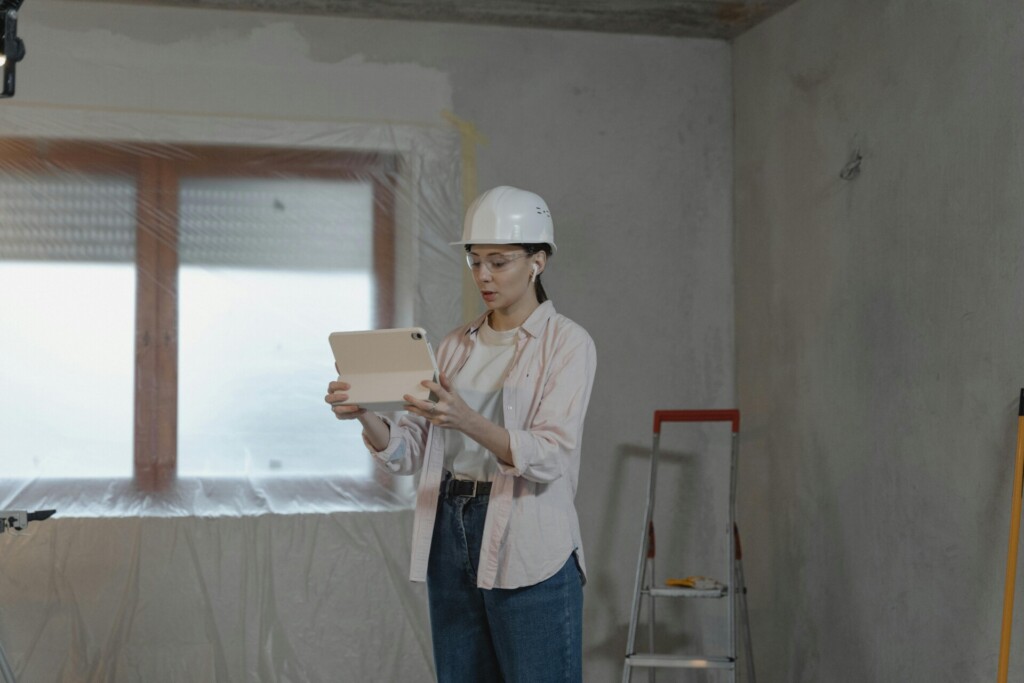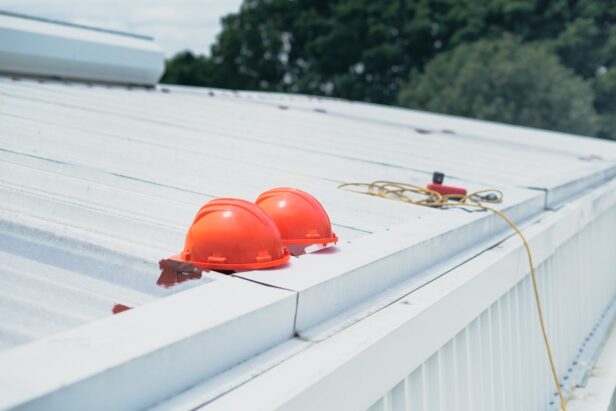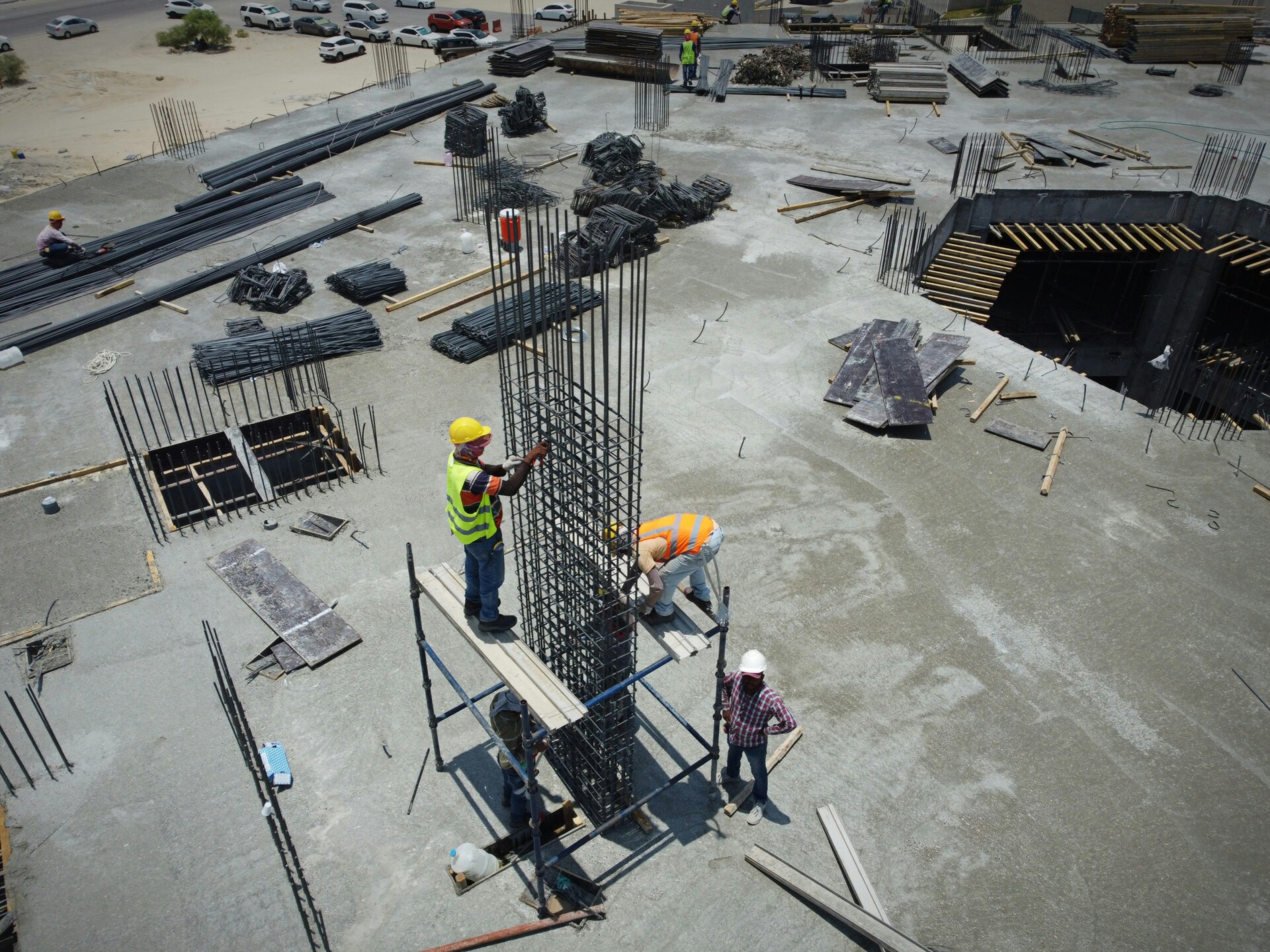San Antonio’s warm, humid climate demands robust building systems that perform reliably year-round. Commercial MEP design San Antonio addresses this challenge by integrating mechanical, electrical, and plumbing systems that serve the city’s diverse commercial landscape.
We focus on coordinating HVAC design, electrical systems, and plumbing design for commercial developments, hotels, healthcare facilities, and multi-family projects. MEP engineers work within San Antonio’s specific regulatory environment and Texas climate conditions to deliver building systems that balance upfront investment with long-term operational efficiency. This comprehensive approach covers essential services and specialized solutions that support successful San Antonio projects.
Which Core MEP Services Are Essential For Commercial Buildings?

Each discipline within MEP delivers specific capabilities that define building performance. We engineer mechanical, electrical, and plumbing systems to support daily operations while controlling long-term costs. The three core services form the foundation of functional commercial space.
Mechanical Engineering and HVAC Systems
Mechanical systems regulate indoor climate through heating, ventilation, and air conditioning components. We design HVAC solutions that address Texas climate challenges, from intense summer heat to variable seasonal temperatures. Proper load calculations ensure equipment operates efficiently without oversizing or undersizing issues.
Energy efficiency drives our mechanical design approach. Variable air volume systems and demand-controlled ventilation reduce energy consumption when spaces are unoccupied. Heat recovery units capture waste energy to precondition incoming air. These strategies lower utility bills and support LEED certification goals for commercial developments.
System integration connects mechanical components with building automation controls. Smart thermostats and occupancy sensors adjust temperature settings automatically. This coordination improves comfort while reducing operational overhead for facility management teams.
Electrical Design and Power Distribution
Electrical systems provide reliable power distribution throughout commercial facilities. We calculate electrical loads for lighting, equipment, and specialty systems to ensure adequate capacity. Power panels and distribution boards are positioned for accessibility and code compliance.
Lighting design balances energy efficiency with occupant needs. LED fixtures paired with daylight sensors reduce consumption while maintaining appropriate illumination levels. Emergency lighting and exit signs meet life safety requirements for commercial occupancies.
Scalable electrical infrastructure accommodates future growth and technology upgrades. Additional circuit capacity and conduit space allow for expansion without major system modifications. This flexibility protects the owner’s investment as business needs evolve.
Plumbing Systems and Water Management
Plumbing systems handle water supply, drainage, and gas distribution for commercial buildings. We size piping based on fixture unit calculations and local water pressure conditions. Proper drainage slopes and venting prevent backups and maintain sanitary conditions.
Water conservation features reduce consumption and operating costs. Low-flow fixtures and sensor-operated faucets minimize waste without affecting functionality. Greywater systems can support irrigation needs for landscaped areas around commercial properties.
Code compliance ensures plumbing installations meet health and safety standards. Backflow prevention devices protect the water supply from contamination. Gas piping for kitchen equipment or heating systems follows strict installation and testing protocols.
These core MEP services work together to create efficient commercial building systems. Proper coordination between mechanical, electrical, and plumbing components prevents conflicts during construction and supports reliable long-term operation.
What Specialized MEP Services Support Complex San Antonio Projects?
Beyond the foundational systems, complex commercial projects require specialized expertise to handle advanced technical challenges and unique requirements. We coordinate these services to address specific project needs while maintaining system integration and performance standards.
Commissioning Services
Commissioning provides systematic verification that building systems operate as designed before occupancy. We work with commissioning professionals to test lighting controls, plumbing systems, and HVAC equipment through comprehensive functional testing protocols.
The process involves reviewing design documentation, witnessing system startup, and verifying that all components meet performance specifications. This integrated approach helps identify operational issues early, reducing callbacks and ensuring systems deliver expected performance from day one.
Construction Administration
Construction administration services provide ongoing oversight during the build phase to ensure work follows design specifications. We maintain regular communication with construction teams, review shop drawings, and conduct site visits to monitor installation progress.
This oversight helps resolve potential conflicts before they impact schedules or budgets. By staying engaged throughout construction, we can address field conditions that may require design adjustments and ensure the final installation matches project requirements.
Project Management Support
Complex projects often require coordination of multiple specialized consultants beyond the core MEP team. We can manage the selection and coordination of architectural services, structural engineering, civil engineering, cost estimators, fire protection engineering, and fuel system specialists.
Project management support also includes construction permitting coordination and contractor proposal reviews. This comprehensive approach helps developers and property owners navigate the full project delivery process with a single point of coordination for technical services.
Technology Design Integration
Modern commercial buildings require sophisticated technology infrastructure that goes beyond traditional electrical systems. We design structured cabling solutions for voice, data, and multimedia networks that support current needs while allowing for future expansion.
Technology design services include fire alarm systems, security systems, public address systems, clock systems, and audio-visual solutions. These systems require careful coordination with electrical and architectural elements to ensure proper functionality and code compliance.
Electrical Safety Studies
Arc flash analysis helps facilities comply with safety codes and protect personnel from electrical hazards. We conduct comprehensive assessments that include short circuit calculations and protective device coordination studies to identify potential risks in electrical systems.
These studies help reduce hazards and minimize the risk of unplanned electrical downtime. By conducting proper protective device coordination, we ensure that electrical faults are isolated quickly and safely, protecting both equipment and personnel while maintaining system reliability.
Historic Preservation Projects
Historic buildings present unique challenges that require specialized approaches to MEP system integration. We excel at fitting modern mechanical, electrical, and plumbing systems into tight spaces while preserving the building’s historical character and meeting current code requirements.
These projects demand creative solutions for routing utilities, integrating climate control, and providing adequate lighting without compromising architectural integrity. Our experience with historic preservation helps property owners modernize these valuable assets while maintaining their distinctive character.
How Do Design Priorities Drive Long-Term Value And Operations?

Energy efficiency shapes every aspect of commercial MEP design we approach. We focus on selecting HVAC systems that optimize performance while minimizing energy consumption. This includes choosing high-efficiency equipment, implementing advanced control strategies, and designing system layouts that reduce energy waste. These decisions directly impact operating costs, often reducing utility expenses by 15-30% compared to standard approaches.
System longevity becomes a cornerstone of our design philosophy. We prioritize durable components and proven technologies that withstand Texas climate conditions. Equipment selection emphasizes manufacturers with strong service networks and readily available parts. This approach reduces replacement frequency and extends system life cycles, protecting the owner’s investment over decades of operation.
Maintenance And Operations Planning
Simple controls drive reliable operations. We design control systems that facility staff can understand and operate effectively. Complex automation often leads to operational problems when staff lack training or systems require specialized troubleshooting. Clear, intuitive interfaces reduce service calls and support consistent performance.
Life-cycle cost planning guides our equipment recommendations. We evaluate initial costs against energy consumption, maintenance requirements, and expected service life. A higher-efficiency chiller may cost more upfront but delivers substantial savings through reduced energy use and extended operating life. This analysis helps owners make informed decisions that support long-term budgets.
Performance Verification Through Commissioning
Commissioning ensures systems operate as designed from day one. We coordinate functional testing of mechanical systems, lighting controls, and electrical components to verify performance meets specifications. This process identifies issues before occupancy, preventing costly corrections and system failures during initial operations.
Performance verification extends beyond basic startup procedures. We conduct integrated testing to confirm that HVAC systems, lighting controls, and power distribution work together effectively. This comprehensive approach reduces the risk of operational problems and ensures energy efficiency targets are achieved.
Electrical Safety And Reliability
Arc flash analysis and short circuit studies form critical components of our electrical design process. These studies identify potential hazards and ensure protective devices coordinate properly during fault conditions. Proper coordination reduces equipment damage and minimizes downtime during electrical events.
Protective device coordination prevents unnecessary outages. When electrical faults occur, properly coordinated systems isolate only the affected area rather than causing widespread shutdowns. This targeted response maintains power to critical systems and reduces business interruption costs.
We integrate these design priorities to create MEP systems that support reliable daily operations while controlling long-term costs. Energy-efficient designs reduce utility expenses, simplified controls support consistent operation, and proper safety coordination prevents costly outages. Together, these choices deliver measurable value throughout the building’s operational life.
How Does Collaboration Improve MEP Outcomes During Design And Construction?
We approach commercial MEP projects with a collaborative framework that includes the owner, design team, and construction contractor from project inception. This three-way partnership creates shared accountability for system performance and project success. Each stakeholder contributes unique expertise that strengthens the overall design approach.
The owner provides critical input on operational requirements, budget constraints, and long-term facility goals. Design teams bring technical knowledge of code compliance, system integration, and performance optimization. Construction contractors offer practical insights on installation feasibility, material availability, and field conditions that affect system placement.
Active Communication During Construction Administration
Construction administration requires constant communication to maintain design intent throughout the build process. We coordinate with field teams to address installation challenges as they arise. Regular progress reviews help identify deviations from the original plans before they become costly change orders.
Weekly coordination meetings between MEP disciplines prevent conflicts during rough-in phases. These sessions allow mechanical, electrical, and plumbing trades to resolve spatial conflicts in real-time. Clear communication protocols ensure that field modifications receive proper engineering review and approval.
Early Coordination Across Disciplines
System integration demands early coordination between mechanical, electrical, and plumbing disciplines. We establish design parameters that allow each system to function efficiently within shared spaces. This coordination becomes critical in multi-story buildings where vertical chases and horizontal distribution must work together seamlessly.
Tight spaces in existing buildings require particularly careful coordination. We evaluate existing structural constraints and develop MEP layouts that maximize efficiency while minimizing conflicts. Stakeholder communication during this phase helps identify potential issues before construction begins.
Sector Applications
This collaborative approach serves diverse project types across San Antonio. Educational facilities benefit from coordinated scheduling that minimizes disruption to ongoing operations. Commercial projects require coordination between tenant improvements and base building systems.
Government and healthcare projects demand rigorous coordination to meet specialized code requirements and operational needs. Industrial facilities require coordination between process equipment and building systems. Worship facilities often involve historic preservation considerations that require careful stakeholder alignment.
Renovation projects particularly benefit from collaborative design because existing conditions create unique constraints. We coordinate with building owners to understand operational requirements while working with contractors to develop practical installation approaches. This collaboration helps ensure that upgraded MEP systems integrate successfully with existing building infrastructure.
Conclusion And Next Steps

Commercial MEP design in San Antonio demands coordinated mechanical, electrical, and plumbing systems that perform reliably in Texas conditions. We approach each project by integrating core services with specialized support for commissioning, arc flash analysis, technology design, and historic preservation requirements. The focus remains on energy efficiency, maintainable systems, and life-cycle cost planning that delivers value throughout the building’s operational life.
Successful MEP outcomes require clear project goals from the start and early coordination between property owners, design teams, and construction partners. Plan commissioning activities during design rather than after installation. Schedule required electrical studies early to identify safety improvements and reduce potential downtime risks. These steps create a foundation for systems that support both immediate construction goals and long-term operational success.
Ready to plan your next commercial MEP project? Contact EB3 Construction to discuss your specific requirements.




